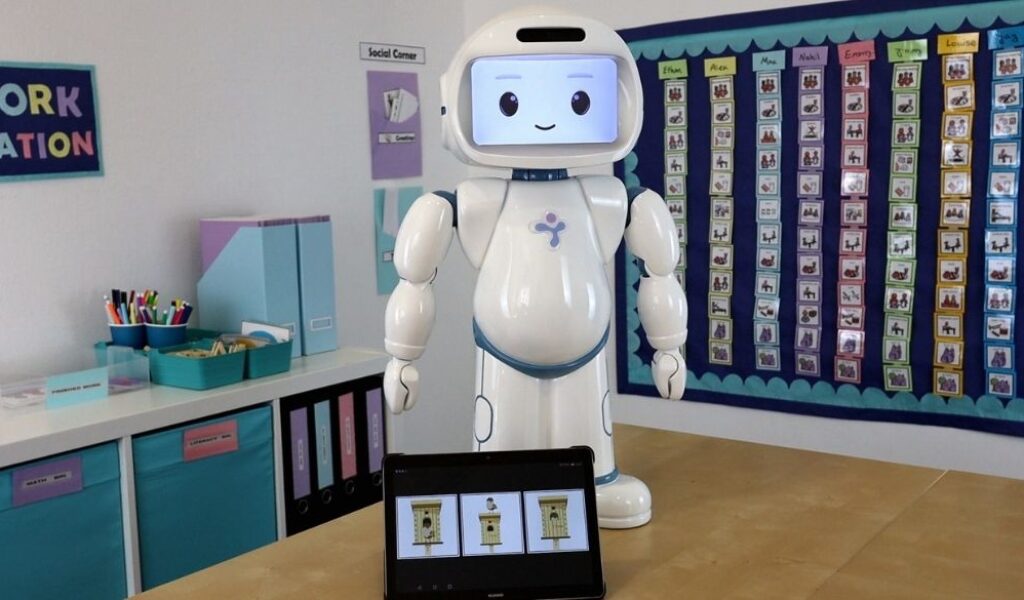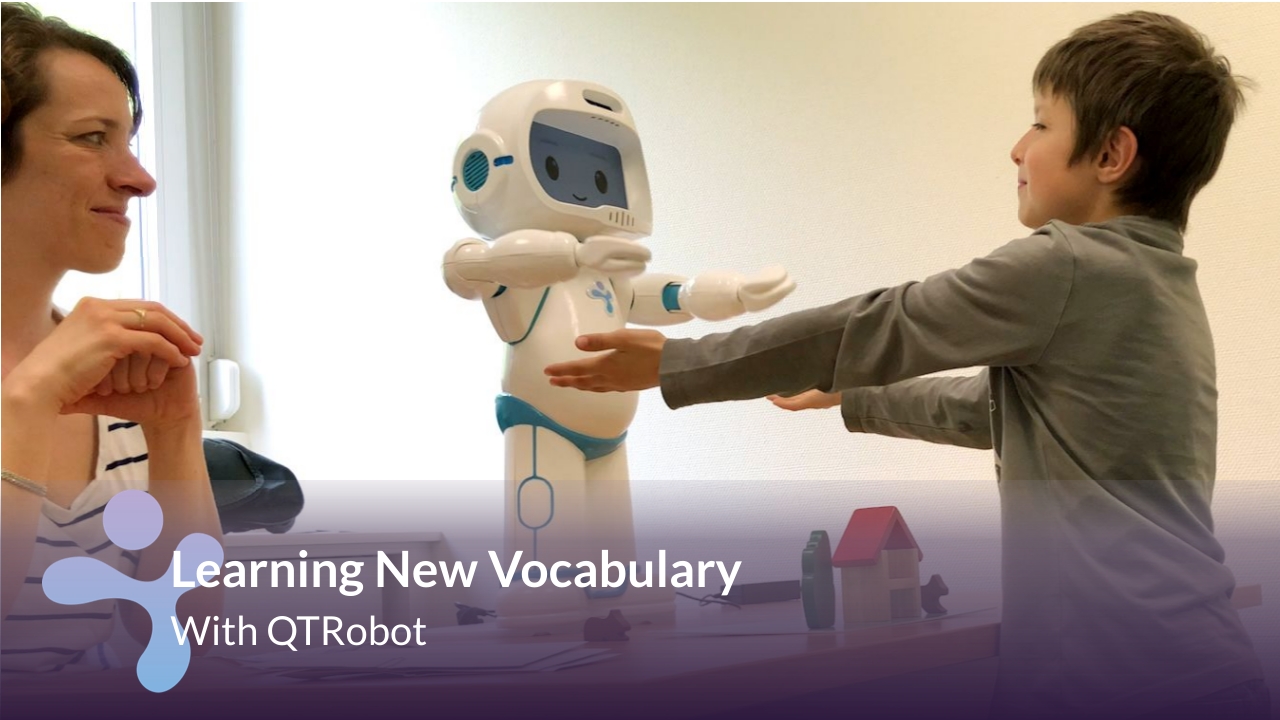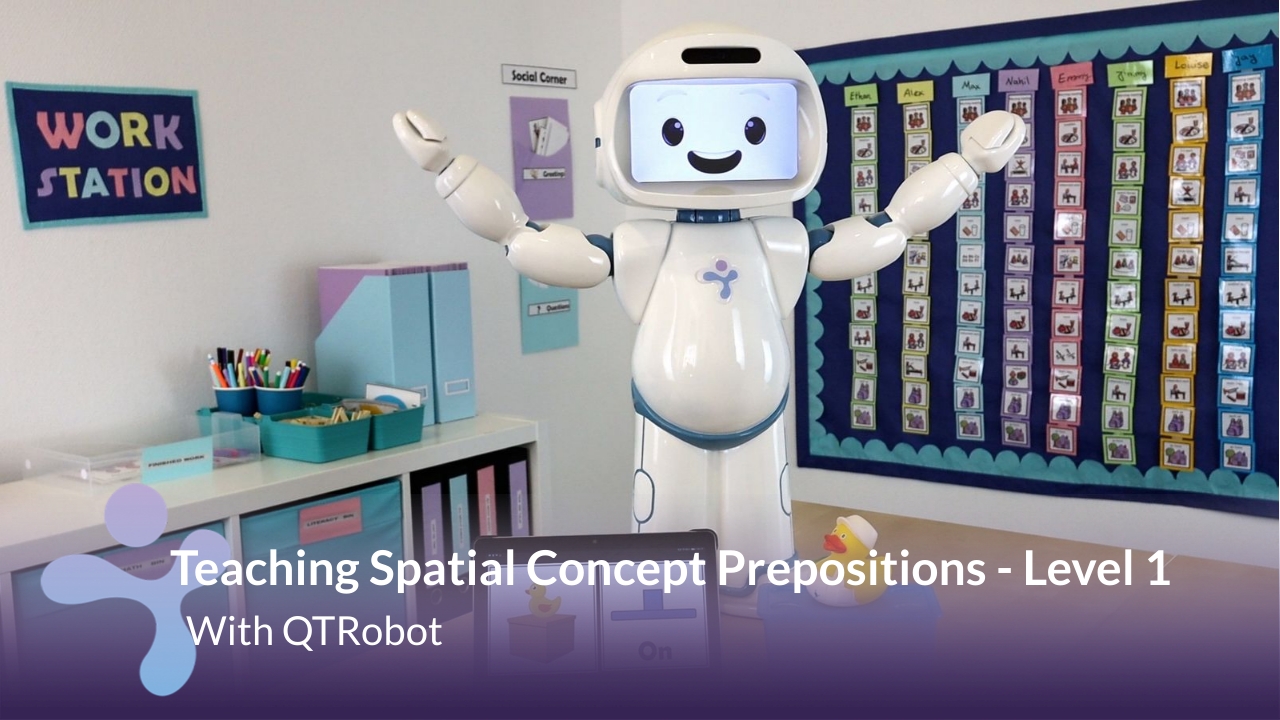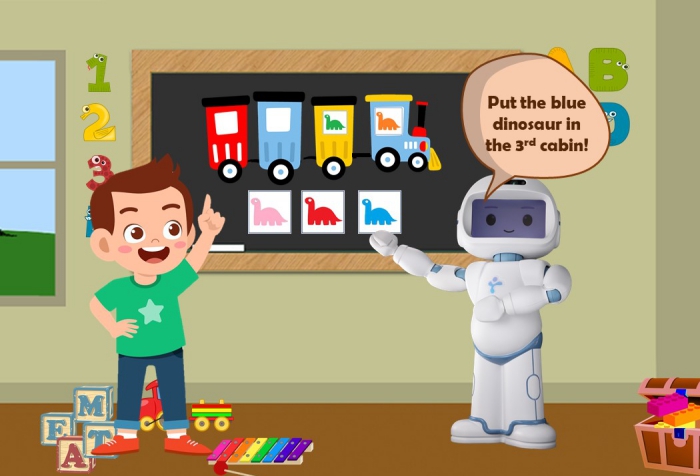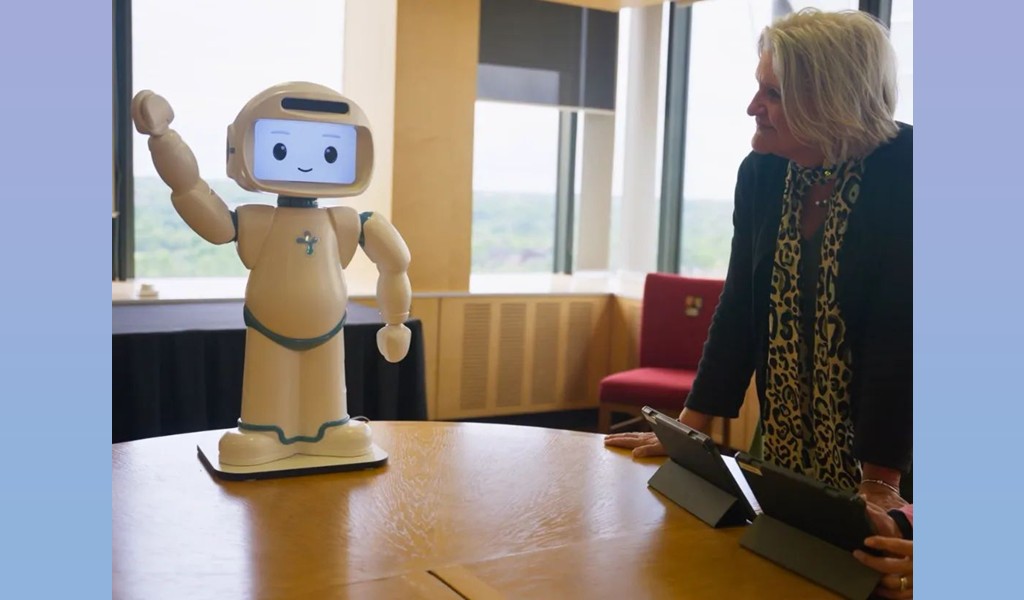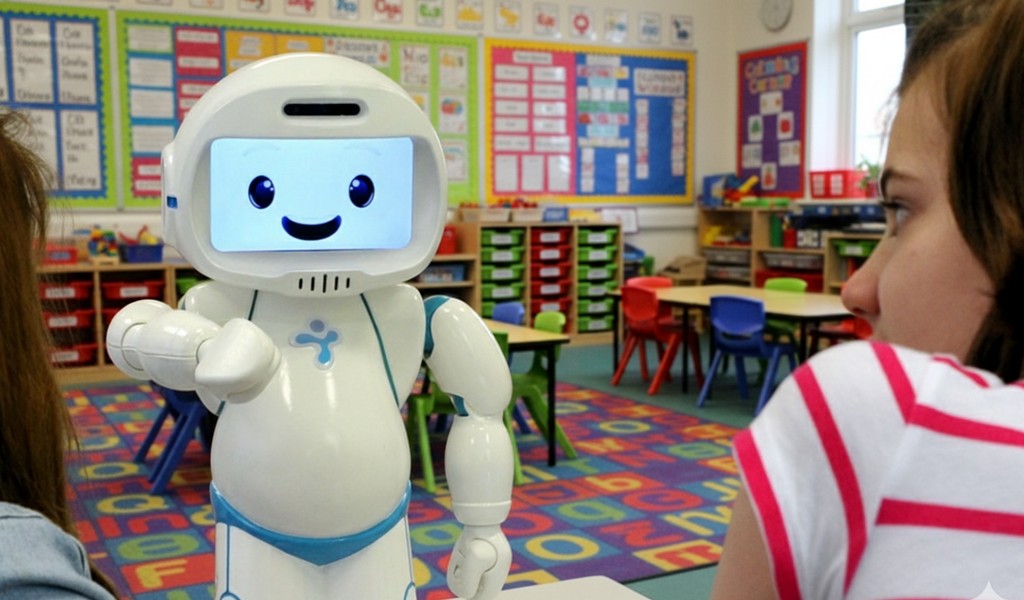Teaching new vocabulary including spatial prepositions to children with autism requires structured activities. In this blog you can find some tips and step by step activities you can use to help your child practice and learn the vocabulary related to spatial prepositions!
Based on CDC’s developmental milestones, a typically developing child should be able to comprehend and use the spatial concept propositions, such as “in, on and under” by the age of 36 months.
Many children with Autism Spectrum Disorder may have language development delay and would require specialized support to acquire new vocabulary and develop receptive and expressive language.
Teaching spatial concepts such as “In”, “On”, “Above”, “Under” can be quite challenging and requires a variety of structured practice exercises to ensure success. In this article, we review some practical strategies and activities that can help you support a child with autism to gain mastery in understanding and expressing the spatial concepts.
A few tips before starting to teach spatial concept prepositions to a child with autism:
- Start with only one preposition, and then add more prepositions when the child shows progress. For example, start from simpler prepositions such as “on” and “In” and then move toward others such as “In front” and “Behind”.
- When labelling the preposition, just use the preposition word that you are focusing on. For example, the ball is IN the basket or the ball is NOT IN the basket. For many learners particularly in the beginning it’s best not to use several prepositions when teaching a new one to prevent confusion.
- Use a variety of games and activities so that the child can learn the prepositions in various scenarios. It will help your child generalize the learnt skills more successfully to his daily life and natural environment.
- Be patient and consistent. Spatial concepts are often not easy for children with autism and neurodevelopmental delays to master. Therefore, it’s critical to give them enough time to practice.
- Try to make learning fun. By using engaging and interesting games and activities to teach spatial concepts, you can improve your child’s chances at succeeding and can facilitate his progress.
Some practical step by step games and activities for teaching spatial prepositions to children with autism:
– Step 1: Demonstrate the concept:
You can use a variety of objects to demonstrate and label spatial concepts. For example, use toys and boxes to show a spatial concept preposition. Put a toy on a box and say: “Look, the cat is on the box.” Or “Look, the ball is on the box.” Try to put more emphasis when you pronounce the spatial concept work to make sure that the child can clearly hear the word. You can also repeat the word one more time after you say the whole sentence. For example, you can say: “Look, the bird is on the tree. It’s, ON!” .
Try to demonstrate the preposition many times each day and use a wide variety of objects and situations. This will not only help the child learn faster, but will also facilitate generalizing these skills to their daily natural environments. Besides using real objects, you can also use pictures to demonstrate and label the prepositions. Below are some examples of images you can use to lable spatial concepts.

Download a free printable card games for teaching spatial prepositions
– Step 2: use visual cards to label the prepositions:
Most children with autism learn better when they can visualize a concept. Using visual demonstrations of spatial concepts will help them learn better and in the case of non-verbal or minimally verbal kids, will allow them to communicate with prepositions.

– Step 3: ask the child to follow directions on spatial prepositions:
When you have demonstrated the prepositions for a while, you can then ask your child to show what they have learnt using different objects. For example, ask the child to put a toy on a box or to put a doll in a doll house. You can use any object in the room or in the kitchen to practice following directions.
Remember to praise your child when they put the objects in the requested place. If the child is experiencing difficulties with putting the objects in the right place, you can either physically help him find the correct place by for example pointing to the correct place, or you can use the preposition visuals to guide them to the right place.
QTrobot practicing following directions for spatial prepositions
Another way to teach the following directions for spatial concepts is using adapted books.
Usually, you can find adapted books that you can use as an independent work activity. The adapted books come with different levels of complexity. You can first start using an adapted book with errorless learning and then you can use the ones with multiple-choice questions.

– Step 4: Play Yes and No games:
You can put an object in a place and ask the child if the object is in a specific place or not. For example, you can put a toy animal in a bag, and ask the child: “ Is the animal in the bag?” or “Is the animal on the bag? “. If the child struggles to answer verbally, you can give him visual cards of Yes and No, so they can show the right answer by pointing to the card.
– Step 5: answering WHERE questions and filling the blank activities:
So far, we have been focusing on the receptive language development for the spatial concept prepositions. When you are sure that your child understands the preposition words, you can move to working on the expressive language development of prepositions. To teach naming the prepositions, you can ask “WHERE” questions. For example, you can put a toy on a box or on another toy, and ask the child to answer where the toy is.
Also, you can use pictures and point to an item and ask the child where the item is. If your child has difficulties in verbal language and cannot say the prepositions, you can always use visuals as a means of communicating about the prepositions.
QTrobot using multiple choice questions for labelling spatial prepositions
Another way is to use adapted books, with multiple-choice questions for answering WHERE questions.
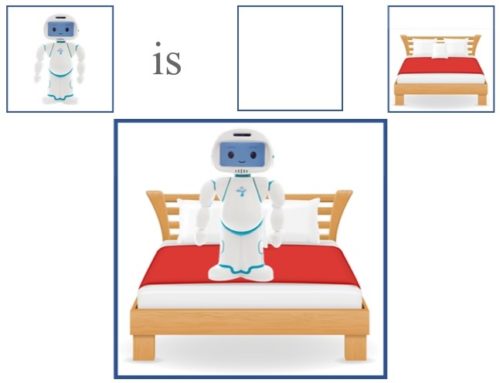
QTrobot using multiple choice questions to teach prepositions
QTrobot educational curriculum for autism and special needs education:
QTrobot is an expressive and engaging robot designed to facilitate learning new social, communication and emotional skills in children with ASD and SEN. By using play-based activities, QTrobot makes learning fun and interesting for children and help them to stay focused and calm by behaving persistent, predictable and easy to understand.
QTrobot comes with pre-installed educational lessons designed to teach a variety of skills including receptive and expressive language in a step by step and structured manner.
Learn more about QTrobot educational lessons designed for speech and communication:
